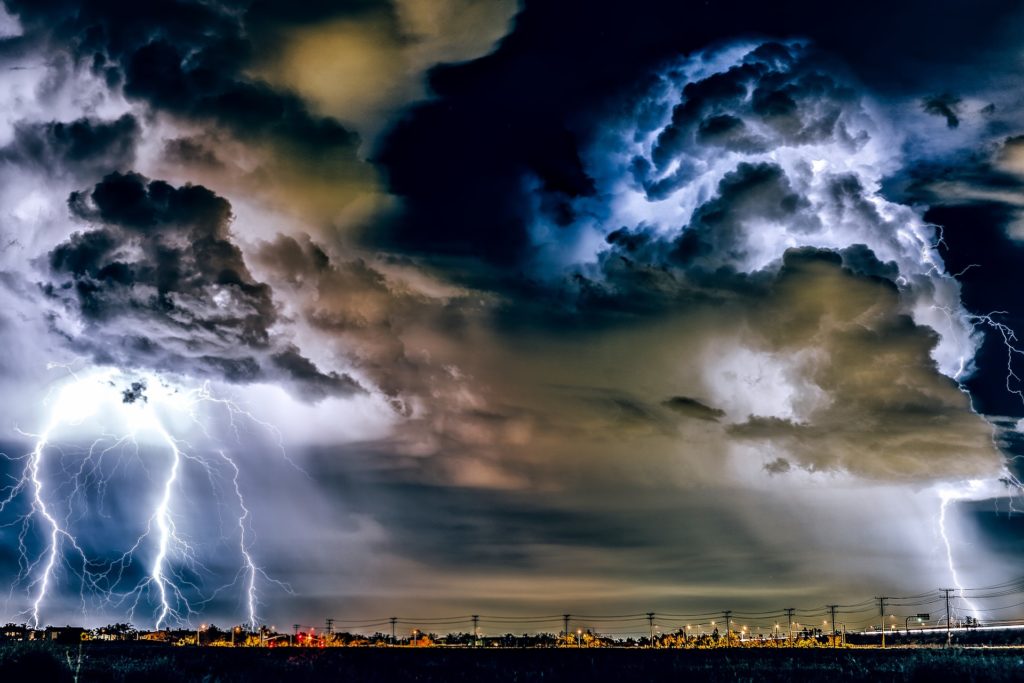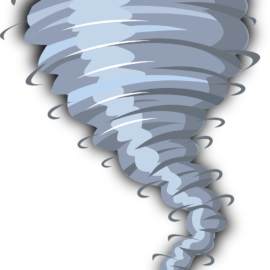
We lead the south in extra thunderstorms caused by heat and smog. Is this an honor?
Many cities are generating enough heat and smog to change the weather around them, but New Orleans appears to be altering its climate more than most, producing a greater number of human-caused thunderstorms than any other large city in the Southeast, a new study has found. New Orleans is creating about 15% more thunderstorms than would happen from natural factors alone, ranking it the top artificial storm producer among dozens of urban areas across much of the South, according to the NASA-sponsored study. “New Orleans rests within an environment that’s ready to pop,” said Paul Miller, an LSU meteorologist who co-authored the study published last month in the journal Urban Climate. “It’s surrounded by water, has high humidity and heat, so thunderstorms are itching to take off.” When those conditions overlap with miles upon miles of heat-absorbing pavement and rooftops, tall buildings and air pollution from vehicles and industrial areas, more bouts of lightning and heavy rain tend to happen.
nola.comhttps://www.nola.com/news/environment/article_74c65502-ee59-11ec-9d1a-5795d5c6df23.html
This is called the “urban rainfall effect” and most cities have it.
While scientists’ understanding of what’s known as the “urban rainfall effect” has grown in recent years, studies have focused on just a few large cities. In the South, Atlanta has been the main target of research on artificially induced rainfall. Studies there have revealed highly localized weather patterns tied to areas of intense urbanization. The Atlanta Braves might wish they’d studied this phenomenon before moving their team to a new ball park in 2017. Located on the edge of a hot spot, know as an urban heat island, Truist Park has been plagued by mini thunderstorms, delaying about a quarter of home games during the team’s first season there. Turns out, the park sits “in the maximum” region for localized thunderstorms, University of Georgia researchers found. If urban areas are triggering more storms in Atlanta, Miller was confident the same was happening across much of the South. With the help of a NASA grant, he teamed up with scientists at the University of Texas at San Antonio to examine all storms that occurred in 32 cities between 2001 and 2015. “It turns out that when you expand the ‘competition,’ as we recently did, New Orleans triggers the greatest excess thunderstorm activity,” Miller said.
The team developed the questions and data needed to compare the cities and then ran the program. We won.
The team developed a system that allowed them to isolate the number of “weakly forced thunderstorms” – the kind most likely triggered by urban influences – from the storms that formed via natural factors alone. Cities enhance precipitation in various ways. A main cause is the “heat island” effect. Hard surfaces like parking lots, streets and buildings absorb and then radiate heat, while parks, farmland and and other green spaces do the opposite, yielding nearby suburban and rural areas temperatures that are often 6 to 10 degrees cooler. Temperatures can range widely within cities. A recent study by climate technology company iSeeChange found that some New Orleans neighborhoods are as much as 18 degrees hotter than other parts of the city. Increased temperature creates unstable air that rises and cools. This produces rain clouds that then soak areas downwind.
There are other factors that contribute to the effect.
Smog can supercharge urban heat-induced rainfall. Fine particles emitted from car engines, power plants and refineries can delay precipitation while at the same time increasing the size of water droplets in clouds. “And when they do fall, it’s a gully washer,” said James Flynn, an atmospheric scientist with the University of Houston. Tall buildings clustered together can slow or trap air until it forms rainclouds, much in the same way hills and mountains do. New Orleans likely has an even stormier future. Climate change is expected to increase Louisiana’s average temperature at least 12 degrees by the end of the century, according to the U.S. Geological Survey. Already on the frontlines of rising seas and intensifying hurricanes, New Orleans will also have to contend with an added number of thunderstorms triggered by its own actions and development patters. That also puts more pressure on the city’s aging, unreliable and frequently overwhelmed drainage system.
There have been articles on the need for more trees and that helps in more ways than just this instance.
Many of the strategies that reduce urban flooding can also help ease urban heat. These include planting more trees and creating more green spaces, which both absorb rainfall and cool urban areas. Cities can promote vegetated ‘green roofs’ and even lighter-colored rooftops, a simple step that can greatly reduce surrounding air temperatures. Other cities in Louisiana may also want to take heed of the study’s findings. It was assumed that the larger the city’s area, the more storms it will trigger, but the study’s authors were surprised to find that smaller cities, like Birmingham, Ala. and Sarasota, Fla., are also producing a significant number of extra thunderstorms. Baton Rouge, Shreveport and Lafayette weren’t included in the study, but they share many of the same characteristics. “One of the more notable findings was that several relatively smaller cities like Knoxville and Norfolk exhibited significant thunderstorm enhancements,” said Neil Debbage, a University of Texas geography professor and study co-author. “This suggests that the urban rainfall effect is potentially widespread throughout the Southeast.”
When we lived in Florida we had rain every afternoon at 4:00. In Virginia it always seemed to come the nights we had swim team competitions. Here there seems to be no rhyme or reason.



